Lilac Fibrecap / Summer / Autumn / Toxic
Enter the realm of caution as we unveil the hidden dangers of the Lilac Fibrecap (Inocybe geophylla), a mushroom that demands respect for its toxic nature.
Join us on a journey of awareness and safety as we delve into the risks associated with this intriguing fungus. With its alluring lilac cap and delicate appearance, the Lilac Fibrecap may capture your attention, but it holds a potentially harmful secret.
Learn to identify its unique features, explore its preferred habitats, and understand the potential dangers it poses. Consuming the Lilac Fibrecap can lead to severe gastrointestinal distress and other adverse health effects. Let this serve as a reminder of the importance of accurate identification, responsible foraging practices, and prioritizing personal safety. Respect the perils that nature presents, and navigate the world of mushrooms with informed caution. Stay vigilant, for the Lilac Fibrecap stands as a stark reminder of the hidden dangers that can lurk within the natural world.
Scientific Name
Inocybe Geophylla var. lilacina
Common Names
Lilac Fibrecap.
Family
Inocybaceae
Habitat
They are mycorrhizal and are most often found beneath deciduous trees, occasionally near conifers.
Description
A fairly common and potentially deadly mushroom. They contain potentially lethal amounts of the chemical muscarine.
Identifying Features for the Lilac Fibrecap:
Cap:
Conical when young they flatten out with age. They are lilac in colour when young but they may fade to a light brown with age. They have a raised umbo in the centre. The caps are covered in silky radial fibres and they tend to split along their margins as they get older.
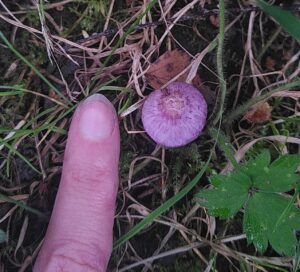
Stem:
A similar colour to the caps, they are silky and fibrous.
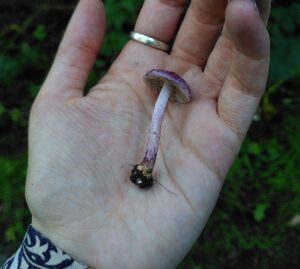
Gills:
The gills are cream coloured when young, darkening with age, fairly crowded and adnexed.
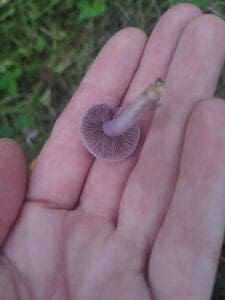
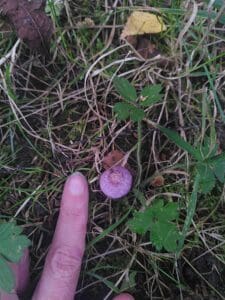
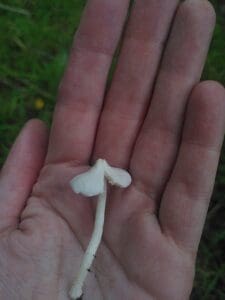
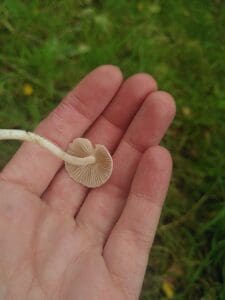
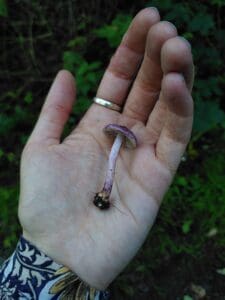
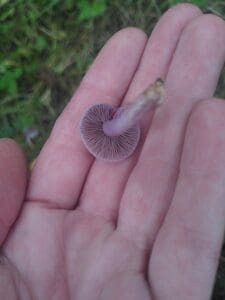
![]()
Smell:
Mealy, like damp flour.
Spores:
Brown.
Known hazards
This is one of the most hazardous mushrooms in the UK and is often mistaken for edible species. They contain potentially lethal amounts of muscarine. Although death in a healthy adult is rare, symptoms of poisoning can include excessive salivation, abdominal pains, sickness and diarrhoea, together with blurred vision and laboured breathing.
Potential lookalikes
They can be confused with the Amethyst Deceiver (Laccaria amethystina) but these have violet coloured gills.
Extra Notes
The genus name Inocybe means fibrous head and geophylla derives from geo meaning earth in ancient Greek and phylla meaning leaf, the variant name lilacina refers to the cap colour.



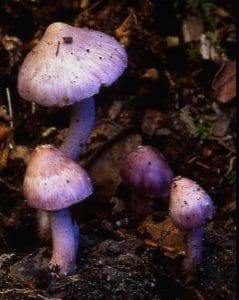
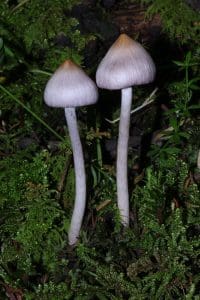
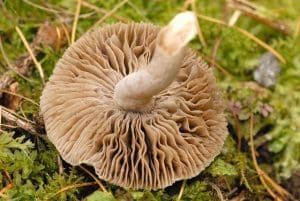
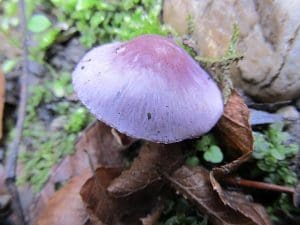



Leave a Reply
You must be logged in to post a comment.